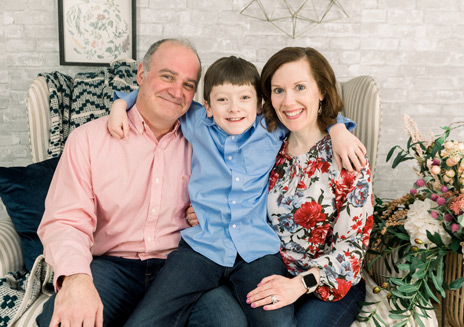Children’s National Research Institute Academic Annual report 2019-2020

Clinical and Translational Science Institute at Children’s National
NIAID-Children’s National Partnership Cracks the Code on Public-Private Research Collaborations
When Children’s National and the National Institute of Allergy and Infectious Diseases (NIAID) at the National Institutes of Health (NIH) first started discussing opportunities to develop a partnership on pediatric allergy and immunology research, the vision was a mentorship program pairing junior investigators at Children’s National with senior ones at NIAID to train the next leaders in pediatric allergy and immunology research.
“As it evolved, however, it became more of a partnership of equals,” said Lisa Guay-Woodford, M.D., director of the Clinical and Translational Science Institute at Children’s National. Over time, it became clear that the best way forward was a unique partnership engaging investigators at every level from both institutions. Together, they tackle pediatric research across three main areas of mutual interest aligning with the NIAID mission: primary immune deficiencies, food allergies and post-Lyme disease syndrome. The shared goal is to conduct clinical and translational research that improves what we know about those conditions and how we care for children who have them.
Partnership investigators design and construct clinical studies that advance prevention strategies, diagnoses, treatments and cures. The two institutions also offer joint training opportunities for physician-scientists interested in caring for children while developing their expertise in pediatric immunology and infectious diseases. Each year, the group holds a Children’s National-NIAID Symposium, where investigators and clinicians gather to review the research underway, raise new research questions and find new areas for scientific collaboration.

The partnership launched as a supplemental activity to the Clinical and Translational Science Institute at Children’s National (CTSI-CN) which is co-led by Children’s National and the hospital’s academic partner, the George Washington University. The CTSI-CN is funded by an NIH Clinical and Translational Science Award (CTSA), an infrastructure grant that facilitates new partnerships and interactions to advance research and accelerate discovery.
“To really transform research into better care, it’s critical to have a fully integrated infrastructure and approach to clinical and translational research, and that’s what we’ve developed together in the CTSI-CN,” Dr. Guay-Woodford says.
She notes that the unique infrastructure design of the NIAID-Children’s National program was born from the experience that Children’s National and the George Washington University gained when creating the fully integrated partnership of the CTSI-CN.
That experience paid off when it came time to build a new kind of collaboration between NIH and Children’s National. The partnership’s leaders were able to design a program that allows for the free flow of information, conversation and support between the NIH, a governmental agency, and Children’s National, a freestanding children’s hospital — a novel and remarkable achievement.
Dr. Guay-Woodford believes that tackling the challenges of this first-of-its-kind infrastructure design will serve as a model for future public-private partnerships with other federal agencies.
The model allows us to build something that provides infrastructure support in a cohesive program and accountability in both places. It creates a two-way program that can dream big and be aspirational but also has the system in place to deal with common research-related hiccups like IRB approvals and patient recruitment in an organized way."
“The model allows us to build something that provides infrastructure support in a cohesive program and accountability in both places,” she says. “It creates a two-way program that can dream big and be aspirational but also has the system in place to deal with common research-related hiccups like IRB approvals and patient recruitment in an organized way.”
In 2020, Children’s National will launch its second partnership with a federal agency: a 6-month fellowship “boot camp” at the Food and Drug Administration (FDA) that will place a clinical fellow from Children’s National at the FDA for one week each month to fully participate in programmatic activities and observe decision-making in the FDA’s Center for Drug Evaluation and Research. The fellowship gives clinician-researchers an intimate understanding of the regulatory processes that affect their practice and will ultimately help them understand how to shape more effective research into new treatments.
Children’s National is “geographically poised” to forge these novel partnerships with the governmental agencies and organizations in Washington, D.C., and it is that combination of infrastructure experience and location that Dr. Guay-Woodford believes will allow Children’s National to build additional intramural-extramural programs with NIH and the FDA in the future.
The goal, she said, is to “catalyze new, exciting and impactful opportunities” in pediatric clinical and translational research and to make them a more effective and efficient engine to drive improvement in the health of children and their families.

